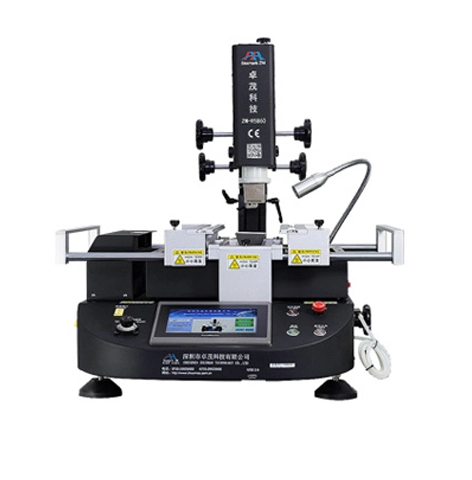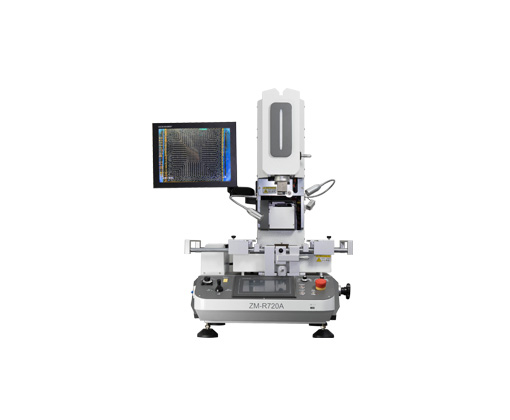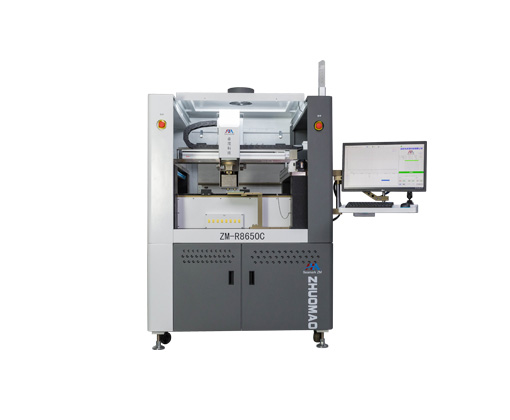
In the ever-evolving world of technology, it is essential to keep up with the latest advancements. One such innovation that has revolutionized the electronics industry is the BGA (Ball Grid Array) machine. As manufacturing processes continually strive for higher efficiency and increased precision, understanding what a BGA machine is and how it functions becomes increasingly important. In this blog, we will delve into the details of this critical piece of equipment and explore its significance in the electronic manufacturing landscape.
To comprehend the importance of a BGA machine, it is necessary to understand the evolution of electronics manufacturing. Traditional through-hole components have gradually been replaced by smaller and more efficient surface-mounted devices (SMDs). While SMDs offer numerous benefits such as compact size and lower production costs, they also present unique challenges in terms of reliability and manufacturing techniques. This is where the BGA machine emerges as an indispensable tool.
A BGA machine is a specialized equipment used for BGA assembly, rework, and inspection. The machine consists of various components designed to handle the intricate requirements of BGA packages. Its main purpose is to ensure precise alignment, controlled heating, and accurate reflow of the solder balls on the BGA component. Additionally, it verifies the integrity of the joints to guarantee optimal electrical and thermal conductivity. Through a combination of automated controls and sophisticated thermal profiling, a BGA machine allows for efficient and reliable assembly of complex PCBs (Printed Circuit Boards).
.webp)
Understanding the advantages of utilizing BGA equipment is crucial in appreciating their significance in the electronics industry. Here are a few notable benefits:
Miniaturization: BGA machines enable the efficient assembly of micro-sized components, facilitating the development of smaller, lightweight, and more portable electronic devices.
Increased Reliability: The precise alignment and controlled heating provided by BGA machines ensure strong solder connections, resulting in robust and durable products.
Enhanced Thermal Performance: BGA devices, with their numerous heat conducting balls, efficiently dissipate heat, making them ideal for high-performance applications requiring excellent thermal management.
Rework Capability: BGA machines also facilitate easy rework and repair of faulty BGA components, minimizing manufacturing costs and reducing electronic waste.
In conclusion, the ball grid array machine plays a significant role in modern electronics manufacturing. Understanding its purpose, advantages, and how it contributes to the evolution of the industry is essential for professionals involved in the production and repair of electronic devices. As technology continues to advance, the demand for accurate and reliable BGA machinery will only grow, ensuring that the manufacturing landscape remains efficient and forward-thinking.
Remember, if you want to stay at the forefront of the electronics industry, familiarizing yourself with what a BGA machine is and how it functions is a crucial step toward success.
BGA stands for Ball Grid Array. A Ball Grid Array is a type of surface-mount packaging for integrated circuits. Instead of using pins around the edges of a chip, a BGA uses an array of small solder balls on the bottom of the package to make the electrical connection to the circuit board.
A BGA machine is a specialized equipment used for soldering, desoldering, and reworking BGA-packaged chips on PCBs. It plays a crucial role in electronic manufacturing and repair, especially for devices like smartphones, computers, and game consoles where BGA chips are common.
BGA technology is a type of surface-mount packaging used to mount ICs onto PCBs. It replaces traditional pin-based chip connections with a grid of tiny solder balls located on the underside of the chip. These solder balls melt during the soldering process to form electrical and mechanical connections between the chip and the PCB.
The BGA manufacturing process involves the design, assembly, and packaging of BGA components, a type of surface-mount packaging used to permanently mount microprocessors and other integrated circuits to PCBs.
Substrate Preparation
Die Attachment
Wire Bonding or Flip-Chip Connection
Encapsulation
Ball Placement
Reflow Process
Testing & Inspection
Singulation and Final Packaging
 EN
EN
 es
es  ko
ko  de
de  it
it  ru
ru  pt
pt  th
th  ar
ar  pl
pl  vi
vi  tr
tr 








